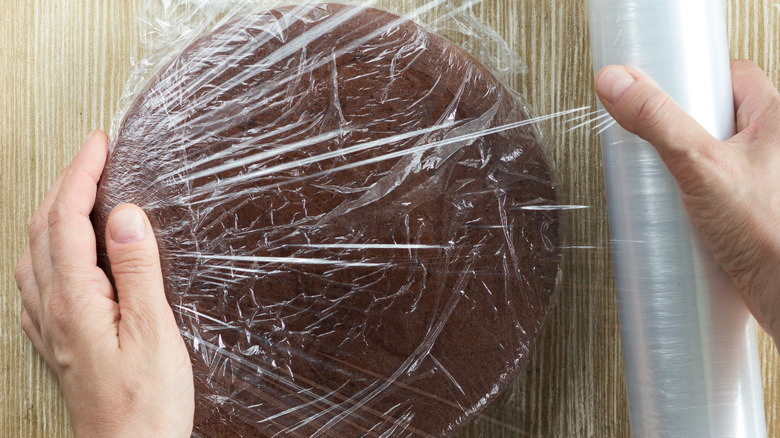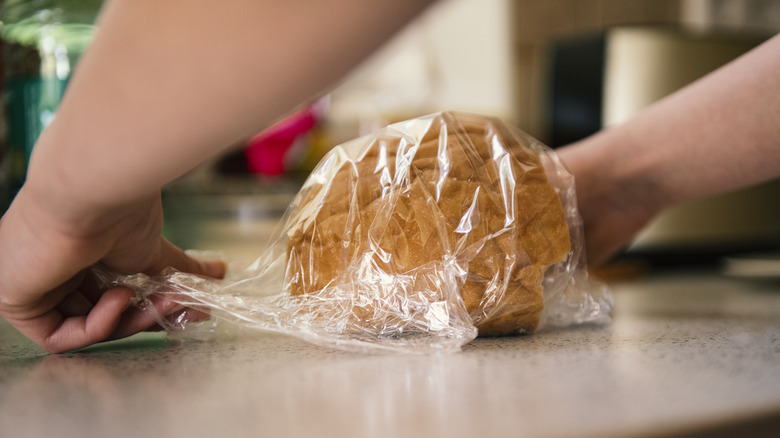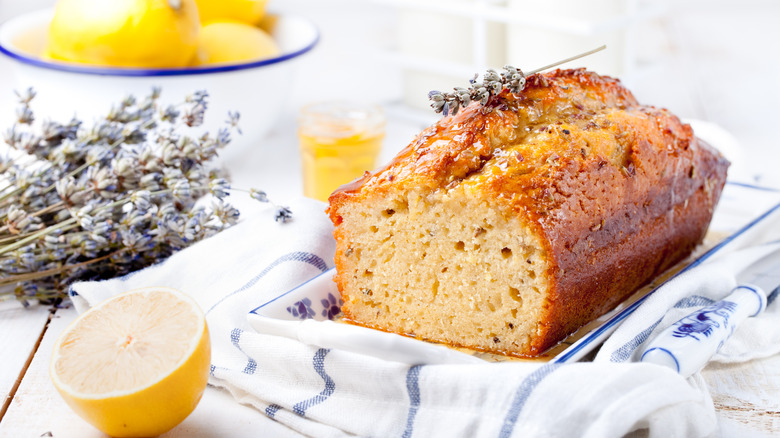Why You Should Cover Your Cake In Plastic Wrap Fresh Out Of The Oven
Moist — it's a word that makes most people uncomfortable, but let's face it, it's one of the key characteristics of a successful cake. Whether it's Angel Food Cake, Devil's Food Cake, or any shade of cake in between, you want the final product to be — brace yourself — moist.
Obviously, the key to this cake ideal is moisture. You can add moisture with additional ingredients, but most tried and true recipes are already designed to produce a successful cake. That means that it's up to you to nail the baking time and to correctly read the signs of when to remove the cake from the oven. There's also another trick that can help you save a cake that's been overcooked, or simply ensure more consistent results.
Wrapping your cake in plastic wrap might seem like the last step you take just before you put your precious cake into storage, but doing this can help out while your cake is still cooling, as well. Plastic wrap traps in the moisture that escapes from your cake as steam, and will help you to produce a consistently moist cake every time.
How to use this plastic wrap hack
The key to this hack is to wrap your cake up while it is still warm, but not fresh out of the oven. Once your cake has finished baking, take it out of the oven and let it rest for a full ten minutes. You can then cover the pan and cake in plastic wrap, or remove the cake from the tin before wrapping it up completely. Either method will accomplish what you need it to, it's just a matter of personal preference.
One thing that Masterclass wants you to note is that keeping the cake in the pan will allow it to continue baking slightly. The pan's residual heat will stay in contact with the bottom and sides of the cake and continue cooking it as it cools down. If you're trying to save an already overbaked cake it might be best to remove it from the pan once it's cooled enough to do so. But for a successfully baked cake, it should be fine to stay in the pan regardless.
Having your cake wrapped in plastic wrap also means that it is ready for storage. This is great when you don't have time to bake and decorate your cake all at once as you can move it directly into the fridge or freezer once the cake has reached room temperature.
Other ways to avoid a dried out cake
Wrapping your cake in plastic wrap is a great tool, but there are so many ways to screw up a cake that this hack shouldn't be solely relied on to fix other problems (there are many cake hacks to ensure you achieve the perfect cake). One of the most important qualities to consider when assessing a dried-out cake is the ingredients.
The quality and quantity of your ingredients can have a huge impact on your final cake. When baking, it is important to weigh out your ingredients rather than measure them. King Arthur Baking says that doing otherwise can cause your volume to be off by up to 20%. That means you can have way too much flour drying out the rest of your recipe.
Using a different type of flour from what's called in the recipe can have the same effect. Different types of flour will absorb and retain moisture differently than others. If your recipe is calling for cake flour, that's not a suggestion and that's the flour that should be going in your cake.
The same goes for the fat called for in the recipe. You can't freely swap butter, margarine, or oil for one another. Each is going to react differently and contain different moisture. Instead, just follow the recipe, and don't forget to wrap your cake up like the gift that it is.


